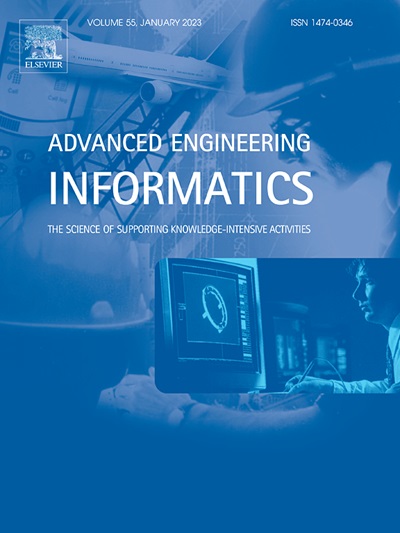Research on multi-stage topology optimization method based on latent diffusion model
IF 8
1区 工程技术
Q1 COMPUTER SCIENCE, ARTIFICIAL INTELLIGENCE
引用次数: 0
Abstract
Topology optimization aims to identify the optimal material distribution to enhance structural performance. Traditional methods such as Solid Isotropic Material with Penalization (SIMP) involve extensive finite element iterative calculations, limiting their ability to address complex or large-scale problems. This paper introduces a novel topology optimization method based on latent diffusion models (TOLDM). It is a multi-stage topology optimization approach that incorporates latent diffusion models with the SIMP method. TOLDM reduces the dimensionality and memory usage of data processing by shifting the diffusion process from the image space to a lower-dimensional latent space, decreasing the reliance on high-performance computing resources and accelerating the training and inference processes. Moreover, by incorporating a cross-attention module, the proposed method introduces physical conditions of various modalities into the diffusion process, enhancing the feasibility and manufacturability of the generated topological structures. This integrated optimization strategy not only improves the diversity and efficiency of structural designs but also achieves an optimized balance between resource consumption and performance. We have also compared TOLDM with other methods based on deep generative models, demonstrating its superiority. Furthermore, by incorporating transfer learning, TOLDM was successfully applied to the structural optimization of automobile engine hoods, enabling the generation of efficient and manufacturable topological structures. This indicates that TOLDM has high applicability in resource-constrained engineering fields, effectively advancing the practical implementation of topology optimization technology and expanding its technical boundaries.
求助全文
约1分钟内获得全文
求助全文
来源期刊

Advanced Engineering Informatics
工程技术-工程:综合
CiteScore
12.40
自引率
18.20%
发文量
292
审稿时长
45 days
期刊介绍:
Advanced Engineering Informatics is an international Journal that solicits research papers with an emphasis on 'knowledge' and 'engineering applications'. The Journal seeks original papers that report progress in applying methods of engineering informatics. These papers should have engineering relevance and help provide a scientific base for more reliable, spontaneous, and creative engineering decision-making. Additionally, papers should demonstrate the science of supporting knowledge-intensive engineering tasks and validate the generality, power, and scalability of new methods through rigorous evaluation, preferably both qualitatively and quantitatively. Abstracting and indexing for Advanced Engineering Informatics include Science Citation Index Expanded, Scopus and INSPEC.
 求助内容:
求助内容: 应助结果提醒方式:
应助结果提醒方式:


